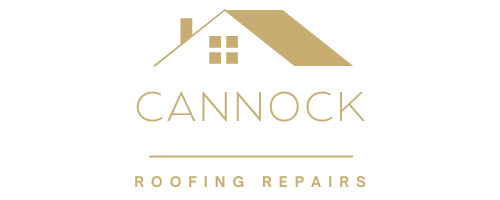A roof inspection is one of the most crucial steps in maintaining your home, ensuring the longevity of your roof, and preventing costly repairs down the line. Regular inspections can help spot issues early before they escalate into major problems. At Cannock Roofing Repairs, we provide professional roof inspection services for homeowners in Cannock, Staffordshire, designed to assess the overall health of your roof and recommend necessary actions. In this blog, we’ll break down what should be checked during a thorough roof inspection and why it’s essential for your property.
1. Roofing Material Condition
The first step in any roof inspection is evaluating the condition of the roofing material itself. Whether your roof is made of tiles, slates, shingles, or metal, over time these materials can wear down, crack, or become dislodged due to weather exposure. An inspector will carefully examine the roof surface to look for any signs of damage, missing tiles, or warping that could compromise the roof’s integrity.
- What to look for:
- Cracked or broken tiles
- Missing shingles or slates
- Moss, algae, or debris build-up
- Loose or misaligned tiles
- Signs of wear on metal roofing, such as rust or corrosion
Keeping the roof’s material in good condition is essential to protect the interior of your home from the elements.
2. Flashing and Seal Integrity
Flashing refers to the metal strips installed around chimneys, vents, skylights, and other roof features to prevent water from seeping into your home. Over time, flashing can deteriorate, become loose, or develop gaps, leading to leaks. A comprehensive roof inspection will check the integrity of the flashing and any sealants used around these areas to ensure water-tightness.
- What to check:
- Gaps or cracks in flashing
- Rust or corrosion on metal flashing
- Loose or missing sealants around roof penetrations
Damaged flashing can lead to significant water damage, so it’s essential to ensure it is well-maintained.
3. Gutters and Downpipes
A roof inspection also involves checking the guttering system, which plays a critical role in directing water away from your home. Blocked, damaged, or misaligned gutters and downpipes can lead to water pooling on your roof, increasing the risk of leaks and structural damage.
- What to look for:
- Clogged gutters filled with leaves, twigs, or other debris
- Leaking or broken gutter joints
- Sagging gutters or disconnected downpipes
- Signs of water staining on the walls, indicating overflowing gutters
Maintaining clean and functional gutters ensures proper drainage, which protects both your roof and your home’s foundation.
4. Roof Structure and Sagging
A roof should maintain a straight and sturdy structure. Any signs of sagging or dipping are indicators of potential structural issues that require immediate attention. During an inspection, the roof’s overall framework, including rafters and trusses, is assessed to ensure they are still capable of supporting the roof’s weight.
- What to look for:
- Uneven or sagging sections of the roof
- Visible dips along the roofline
- Cracks in walls or ceilings inside the home, which could indicate roof stress
Sagging roofs can result from weakened structural supports or water damage and should be addressed to prevent further deterioration.
5. Attic Ventilation and Insulation
While the exterior of the roof is important, the interior also needs careful inspection, particularly the attic space. Adequate ventilation and insulation in the attic are essential for regulating the temperature of your home and preventing condensation build-up, which can lead to mould and wood rot.
- What to check:
- Proper ventilation to allow airflow and prevent heat and moisture build-up
- Signs of moisture, mould, or mildew in the attic
- Gaps in insulation or signs of deterioration
Ensuring proper insulation and ventilation will not only protect your roof but also help in improving your home’s energy efficiency.
6. Signs of Leaks or Water Damage
One of the primary purposes of a roof inspection is to identify any potential leaks or water damage. Inspectors will look for signs of water infiltration, both inside and outside the home, to catch leaks early before they cause significant damage.
- What to check:
- Water stains on ceilings, walls, or in the attic
- Damp patches, mould growth, or musty odours
- Peeling paint or wallpaper
- Visible signs of water pooling on the roof
Addressing water damage early can save homeowners from costly repairs and preserve the structural integrity of the roof.
7. Chimney and Skylight Condition
If your roof includes a chimney or skylight, these areas require particular attention during an inspection. Chimneys can develop cracks, and skylights may lose their seals over time, both of which can lead to water infiltration.
- What to look for:
- Cracks in the chimney bricks or mortar
- Damaged chimney flashing or caps
- Skylights with cracked glass or compromised seals
- Leaks or water staining around skylights
Ensuring these roof features are in good condition will help prevent unnecessary water damage and heat loss.
Conclusion
Regular roof inspections are essential to keeping your roof in optimal condition and avoiding costly repairs. By identifying small issues early, such as cracked tiles, damaged flashing, or blocked gutters, you can prevent more significant problems that may require extensive repairs or even roof replacement. At Cannock Roofing Repairs, we offer thorough, professional roof inspections to help homeowners in Cannock, Staffordshire, maintain the health and longevity of their roofs.
Call us on: 01543 220 998
Click here to find out more about Cannock Roofing Repairs
Click here to complete our contact form and see how we can help with your roofing needs.

